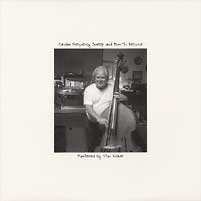Cardas - Frequency Sweep and Burn-In Record

|

| Label: |
Cardas Records |
| Genre: |
Test Record |
| Product No.: |
ACAR 3
|
| Availability: |
Back Ordered
|
| Category: |
System Set Up Record |
| Note: | 180 Gram |
This item is Back Ordered and currently unavailable.
Please inform me of any status changes for this product regarding its upcoming availability.
180-gram vinyl
The Cardas Frequency Sweep and Burn-in Record is a unique tuning tool for system set-up, diagnostics and maintenance. It was produced by George Cardas and mastered by Stan Ricker. The ³Sweeper², in addition to the standard tones, includes relative and absolute polarity checks, vocal channel identification and frequency sweeps that ultrasonically clean the cartridge stylus and degauss the entire system. And, locked, pink noise grooves that repeat endlessly, blank plateaus, even a sync label to check platter speed. All on a 180 gram pressing with a smiling Stan cover.
Side 1 • Sweeper • 45 rpm (also works @ 33 1/3rd rpm). Note: This is three cuts, interleaved with smooth sections, to be played at 45 rpm.
Track 1. Short Sweeps, short version (52 seconds)
Lock-out
Track 2. Short Sweeps, long version (4 minutes 46 seconds)
Lock-out
Track 3. “I’ve Got a Feeling I’m Falling” Artists: Tom Loncaric Band. Music Thomas Waller and Harry Link. Publisher: Ann Rachel Music. (2 minutes 29 seconds)
Lock-out
Track 4. 1K tone (740.46Hz tone @ 33 1/3rd rpm)
Lead-out spiral and final tie-off
Side 2 • Burn-In • 33 1/3 rpm. Note: Burn-in is mastered at two different speeds and designed to be played at 33 1/3 rpm. The first section, from the outside edge to the lock-out groove (the stylus will stay in the groove until lifted out), is mastered at 16 2/3 rpm. Tracks 2, 3 and 4 are mastered at 22 1/2 rpm.
Track 1a. Voice announcement by George Cardas, "Greetings from the left channel"
Spiral
Track 1b. Voice announcement by George Cardas, "From the right channel"
Spiral
Track 1c. Voice announcement by George Cardas, "From both channels" Note: This is lateral modulation (mono, in phase).
Spiral
Track 1d. "In polarity" Both channels in positive polarity
Spiral
Track 1e. "Out of polarity" Both channels in reversed or negative polarity Spiral
Track 1f. 13 strikes on a high "B-flat" on a piano Note: The last of the 3 strings are brought into zero-beat, dead-on tuning. Listen for the impact of hammer on string, quickly followed by room reflections mingling with one another, followed by a keener sense of the piano sound itself, as the ring-out time of the string exceeds that of the reverb time of the room.
Spiral
Track 1g. Hollow sticks, of various lengths and diameters, being struck, one on another. Note: It is recorded in a very reverberant, spacious environment. The spatial, impact and directional cues will not sound correct if the polarity is wrong.
Lock-out. Note: The remainder of this side is cut at 22.5 rpm and consists of three wide bands of pink noise, separated by two blank, 1/2 inch wide plateaus. The plateaus are protected by two blank grooves on each side, to keep the stylus from sliding into the pink noise. The three wide bands are groups of individually locked grooves of mono pink noise, recorded at "0" dB, relative to NAB standard level. These are continuous grooves and the stylus will stay in a groove until it is lifted out. This 180 gram pressing is made of specially formulated hard vinyl.
Track 2. 20 locked grooves, lateral modulation (mono)
1/2” wide, unmodulated plateau
Track 3. 32 locked grooves, vertical modulation (out-of phase)
1/2” wide, unmodulated plateau
Track 4. 20 locked grooves, lateral modulation (mono)
Track 5. 26 unmodulated grooves Note: These unmodulated grooves facilitate electro-forming (matrix) operations and help vinyl flow in the record press, for a quieter, flatter disk.
Lead-out spiral and final tie-off
Pressing: 180 gram, specially formulated hard vinyl
Mastering Lathe: Neuman VMS 66 lathe
Cutter Head: Helium cooled, Neuman SX-74
Controller: A Sontec Compudisk computer
Motor: Technics 5-speed direct drive Console and cutter head electronics: Keith O. Johnson
General Suggestions for Use
by George Cardas
The Cardas Frequency Sweep and Burn-In Record is a set of tools that audiophiles have requested over the years. The benefits and uses of the "Sweeper" vary because turn tables and systems differ, as does the knowledge and tools of the end user.
The most important tools on this record are the Side 1 Frequency Sweeps. These are the degaussing tracks 1 and 2. Simply play one of these tracks through your system at a low, normal level and it will degauss the cartridge and the rest of the system, plus clean the stylus ultrasonically. When played, the tracks progress from low frequencies at a high relative amplitude, to high frequencies (35 k+ if played at 45 rpm) at a low level. This is a complete degaussing process and an ultrasonic cleaning of the stylus at the same time. You may hear clicks and pops in the high frequency section after use. This is caused by the accumulation of junk which has fallen off the stylus during ultrasonic cleaning. Clean the record to remove the debris. This is the most efficient and cheapest way I know to degauss your cartridge and system. Basically, it makes a flux buster obsolete.
How often you use the Frequency sweeps is something you have to determine for yourself. The build up of residual stress in a system, is system dependent. Some parts require more frequent degaussing than others. For instance, permeable parts require more frequent degaussing than non permeable parts. An iron core cartridge will need more attention than ruby cored cartridge. Speakers with cored inductors acquire more stress than those with air core inductors. There should be an audible difference after you play the Frequency Sweeps. I run the sweeper at least once a week, it really works!
The sweeps are also useful as room tuning tools for setting up wall and ceiling treatments. Room reflection points, as well as other anomalies in the system, cause the image to shift with rising frequency. Simply sit in the hot spot and play the sweep at a low level. The image should be centered and stable in a well focused room. You can ignore changes in volume which are caused by comb filtering. Hard reflection points in the room can cause a shifting in focus, so padding these points will help stabilize the image. Hold a piece of foam rubber at arms length and block the sound from suspected reflecting points. When you think you have located the trouble spots, cover them with suitable damping materials.
An interesting speaker set-up trick is to listen to the low frequency, out of phase tones while sitting in the listening position. The note should cancel completely if speakers are positioned symmetrically. Try both tones and pick the one that works best for your room. Playing this tone while in the null point, at the hot spot, may also allow you to pick out strange noises and rattles in the system. Sorting out the exact cause of these anomalies is up to you.
The higher frequency tones must be measured in order to be compared. You can use these if you have setup machines and other ways of measuring. They are good for crosstalk type azimuth adjustments. Start by listening to or measuring the channel opposite the one being played and adjust it to minimum level. Then use any other test that needs relatively even tones of different frequency, but of the same level. Actual levels are approximate, but very even with respect to one another. If you have an oscilloscope, a triangle wave should have straight sides if all is right.
The voice announcements (Tracks 1a, 1b, 1c and 1d at the beginning of Side 2) are, again, for determining proper channels and centering the sound. They were recorded in a small booth and can be compared with the spatial qualities of Tracks 1f and 1g.
The continuous pink noise grooves at the end of Side 2 (Tracks 2, 3 and 4) are unique. They are concentric groves, not normal spirals. The stylus will stay in the grove until lifted out. I use these continuous grooves with discretion, to break in a new cartridge, but only after it is properly set-up. Part of this break-in process is the adjustment of the final azimuth. I can’t determine the length of break in time for your system, but I feel an hour would be close to the mark. Save your cartridge for music!
If all adjustments on the arm are correct and the table is perfectly level, the arm should track very slowly inward on the smooth sections of Side 2. This is an "after proper adjustment" test! It is not a way to adjust the tone arm.
If the system is out of relative phase, you will have to determine where one channel is reversed. It will often be one of the speaker connections or one of the cartridge connections. Usually the offending connection can be found by visual inspection. If the output of the out of phase, locked grooves (Side 2, Track 3) are combined, they should null. This can be used as an azimuth check.
The 1/2" wide, Unmodulated Plateaus on Side 2 are for checking cartridge alignment and tone arm bias. On level tables, properly adjusted arms will track slowly inward on the Plateau.
The Sync Label is used to determine the rotational speed of the platter. The label has four concentric rings of short, white lines to measure both 33.333 and 45 RPM. One set is for 60 cycle alternating current in the U.S. and the second set is for international, 50 cycle use. If you view the label under a standard incandescent or florescent lamp, the stroboscopic effect of the light will make the appropriate lines on the label appear to stand still when the speed is correct.
| 1. Side 1 • Sweeper • 45 rpm (also works @ 33 1/3rd rpm). | 2. Track 1. Short Sweeps, short version (52 seconds) | 3. Lock-out | 4. Track 2. Short Sweeps, long version (4 minutes 46 seconds) | 5. Lock-out | 6. Track 3. 'I’ve Got a Feeling I’m Falling' Artists: Tom Loncaric Band. Music Thomas Waller and Harry Link. Publisher: Ann Rachel Music. (2 minutes 29 seconds) | 7. Lock-out | 8. Track 4. 1K tone (740.46Hz tone @ 33 1/3rd rpm) | 9. Lead-out spiral and final tie-off | 10. Side 2 • Burn-In • 33 1/3 rpm | 11. Spiral | 12. Track 1b. Voice announcement by George Cardas, 'From the right channel' | 13. Spiral | 14. Track 1c. Voice announcement by George Cardas, 'From both channels' Note: This is lateral modulation (mono, in phase). | 15. Spiral | 16. Track 1d. 'In polarity' Both channels in positive polarity | 17. Spiral | 18. Track 1e. 'Out of polarity' Both channels in reversed or negative polarity Spiral | 19. Track 1f. 13 strikes on a high 'B-flat' on a piano | 20. Spiral | 21. Track 1g. Hollow sticks, of various lengths and diameters, being struck, one on another. | 22. Track 2. 20 locked grooves, lateral modulation (mono) | 23. 1/2' wide, unmodulated plateau | 24. Track 3. 32 locked grooves, vertical modulation (out-of phase) | 25. 1/2' wide, unmodulated plateau | 26. Track 4. 20 locked grooves, lateral modulation (mono) | 27. Track 5. 26 unmodulated grooves | 28. Lead-out spiral and final tie-off |




 (3.75 Stars) 4 person(s) rated this product.
(3.75 Stars) 4 person(s) rated this product. |
|||
|
|||
| Write a review and let people know what you think of this product OR just rate it. | |||
|
View other items by Cardas |
|
 In-Stock Music Orders Over $99 SHIP FREE Within The Continental U.S.
In-Stock Music Orders Over $99 SHIP FREE Within The Continental U.S.







 Login
Login
 My Account
My Account
 Cart
Cart Wishlist
Wishlist
 Contact
Contact




